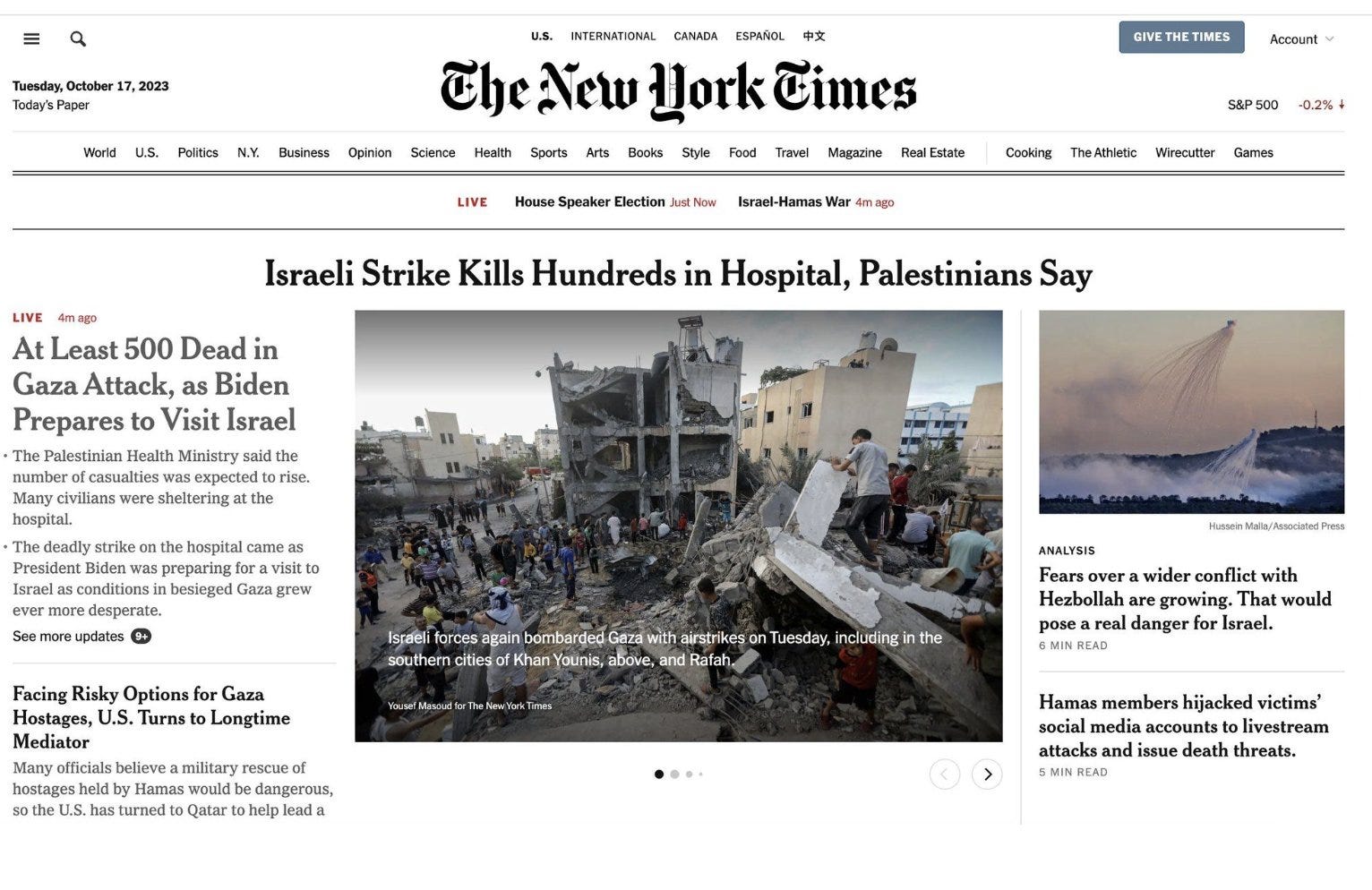I thought I’d seen just about every injustice toward Israel in the American press. But even I was shocked by the November 15th, 2012, edition of The Washington Post. Over the fold on the front page, was a color photograph of a Palestinian man holding a shrouded bundle. Around him stood several Palestinian men, each with a similarly anguished expression. The photograph appeared on the fifth day of Operation Pillar of Defense as the IDF responded to massive Hamas rocket fire from Gaza.
The caption was even worse. “Jihad Masharawi weeps while he holds the body of his 11-month old son Ahmad” it read, “following an Israeli air strike on their family house in Gaza City.”
The Washington Post, relatively speaking, was not known to be overly critical of Israel. Its editor, the late Fred Hiatt, Harvard educated and proudly Jewish, was friendly to the Israeli Embassy in Washington where I was serving as ambassador.
Opening the paper that morning, I immediately called him and shouted, “What are you doing, Fred? This photo will kill us.”
He calmly explained that he was running a newspaper and the fighting in Gaza was front page news. I asked him if he knew whether the photograph was genuine.
“We don’t know what’s in that bundle,” I said, “are you sure there’s a real baby in there, and if yes, are you sure of how it was killed?” The men’s expressions were too uniform and the way they stood was too well-framed. I pressed him: “Are you confident that the photograph wasn’t faked?”
Fred replied that the paper received the photo from the Associated Press which vouched for its veracity. “We’re 100% sure it’s real.”
But it wasn’t. Three weeks later an independent investigation determined that the infant was killed by a short-fired Palestinian rocket. Israeli analysts further concluded that the entire scene was staged.
The Washington Post printed an apology, sort of, predictably on the back page. But the damage to Israel was already done.
Two years later, during Israel’s 2014 Operation Protective Edge, Hamas flooded the web with false images of Israeli atrocities. Among the most graphic was the following (trigger warning)

This was a double lie – Israeli sources said that not more than fifty were killed, and the image was not of the Al-Ahli Hospital. A glimpse at the caption revealed that the image was of a completely different building in a totally different location.What difference is there, really, between the editors of The New York Times and those posting zombie pictures?Confidential sources have told me that the accusations of Israeli guilt for the Al-Ahli bombing contributed to the government’s decision to delay the IDF’s ground incursion into Gaza. Even when false, photographs can have a far-reaching, deleterious impact.Of course, not all journalists are out to get us. But whether they’re for or against the Jewish State, they’re in the business of media. And media needs customers. They need most lurid, eye-catching, click-baiting stories, and are fearful that some other outlet will steal their scoop. In the never-ending 24-hour news cycle, where fast is more important than fact, few journalists can afford to take the time and effort to verify a source. Hamas can issue accusations within seconds; the IDF is duty-bound to investigate, which takes time. And the quickest way for a correspondent to get evicted from Gaza at gunpoint is to question the truthfulness of a Hamas spokesman.As Hamas, Palestinian Islamic Jihad, and Hezbollah all know, a picture can tell a thousand lies. Lies that can alter international opinion and impair Israel’s ability to defend itself. Lies that can endanger the safety of millions of Jews worldwide
Photographs are not the only form of Hamas lies, unfortunately. Cyabra, the intrepid Israeli social media intelligence company, estimates that in the 24 hours after the alleged hospital bombing, over 43 million X (formerly Twitter) users were exposed to misleading posts on the subject generated by anti-Israel bots.
In a world inundated with lies, the job of those who care about Israel is to separate them from the truth. Our job is to determine whether a photograph is real or just another attempt to delegitimize us. Next time you see a photograph like this, taken by the Times’ Samar Abu Elouf:

Remember the full page photo of the grieving father on the front page of the Washington Post over a decade ago. Ask if the image is truly Israel’s fault – or just another Hamas lie.
This is the third of a multi-part, up-to-the minute Clarity report from the media front of the Gaza War.







